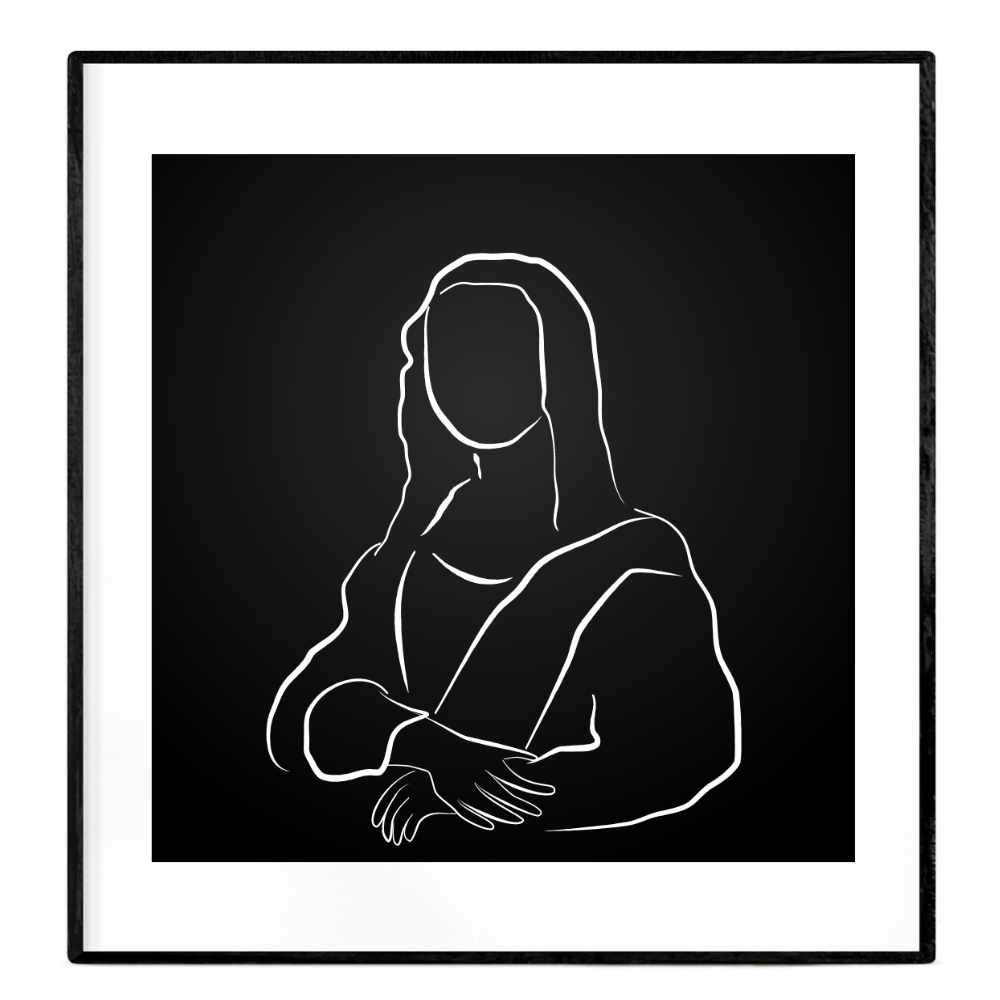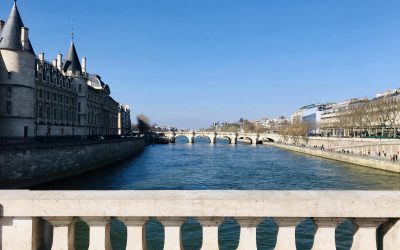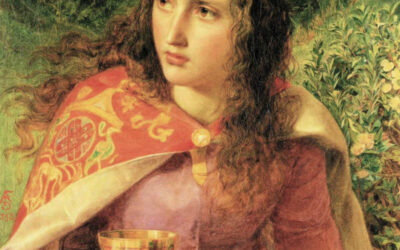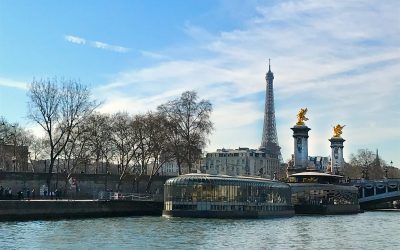The Louvre Museum is one of the largest and most famous museums in the world. Located in Paris in the heart of the city, it is an icon of France, in and of itself like the Eiffel Tower and Notre Dame de Paris.
But there is a lot more to the building than just its artwork. With a fascinating history and architecture, here are some interesting facts about the Louvre that just might make you might see this great monument from a whole new perspective. Allons-y!
- 1. It is the most visited museum in the world.
- 2. It displays more than 35,000 different objects.
- 3. It used to be a medieval fortress with a moat around it.
- 4. It was a royal palace.
- 5. No one knows where the name "Louvre" comes from.
- 6. Sun King Louis XIV was the last King of France to live in it.
- 7. It is on the Axe Historique of Paris.
- 8. It used to be attached to another palace, the Palais des Tuileries.
- 9. Napoleon renamed it the Musée Napoléon.
- 10. After Napoleon's downfall, it had to return a lot of artefacts.
- 11. The Mona Lisa was stolen from the Louvre.
- 12. Artists used to live at the Louvre.
- 13. France's Ministry of Finance used to be located on the 1st floor of the Denon Wing.
- 14. The Louvre is next to the famous Pont des Arts bridge.
- 15. The Horses on top of of the Arc de Triomphe du Carousel in front of the Louvre are copies.
- 16. Its artworks were evacuated during WWII.
- 17. It is owned by the French Government.
- 18. It connects directly to the metro and a small underground mall.
- 19. Some of Marie Antoinette's furniture is at the Louvre.
- 20. It is not symmetrical.
- 21. There is a Louvre in Abu Dhabi and Lens.
- 22. There are four glass pyramids.
- 23. The statues around the front courtyard feature 86 Illustrious men.
- 23. Picasso exhibited his works there.
- 24. Artworks at the Louvre move all the time.
- 25. There is a giant parking lot under it.
- 26. It has a staff of over 2000 people.
- 27. You can visit it at night.
- 28. There are sometimes wine tastings there.
- 29. It makes money by allowing film shoots.
- 30. There are special activities for kids at the Louvre.
- 31. It has a special connection to the Musée Eugène-Delacroix.
- 32. It has a full time art-sleuth as an employee.
- 33. The return of other works has been contested.
- 34. It is in a flood zone.
1. It is the most visited museum in the world.
Nearly 9-10 million people visit the museum every year, making it the most visited museum in the world. About 75% of that figure is made up of foreign tourists, but locals also flock to the museum in numbers.
The museum is so popular that it stopped offering “free-entry Sundays”, unlike other museums in Paris like Musée d’Orsay.
2. It displays more than 35,000 different objects.
There are more than 35,000 items on display over an area of 72,735 square meters (782,910 square feet).
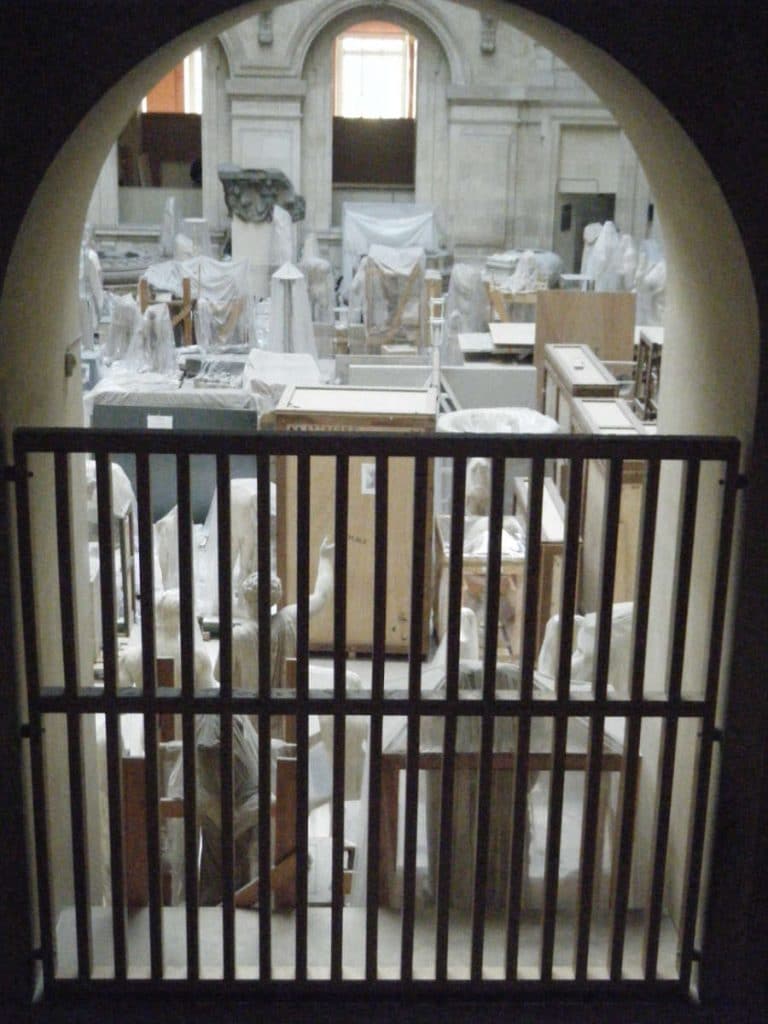
However, that is less than 10% of the Louvre’s actual collection which counts more than 380,000 objects of art.
3. It used to be a medieval fortress with a moat around it.
The fortress that became the Palais du Louvre was initially built in 1190 French King Louis Auguste.
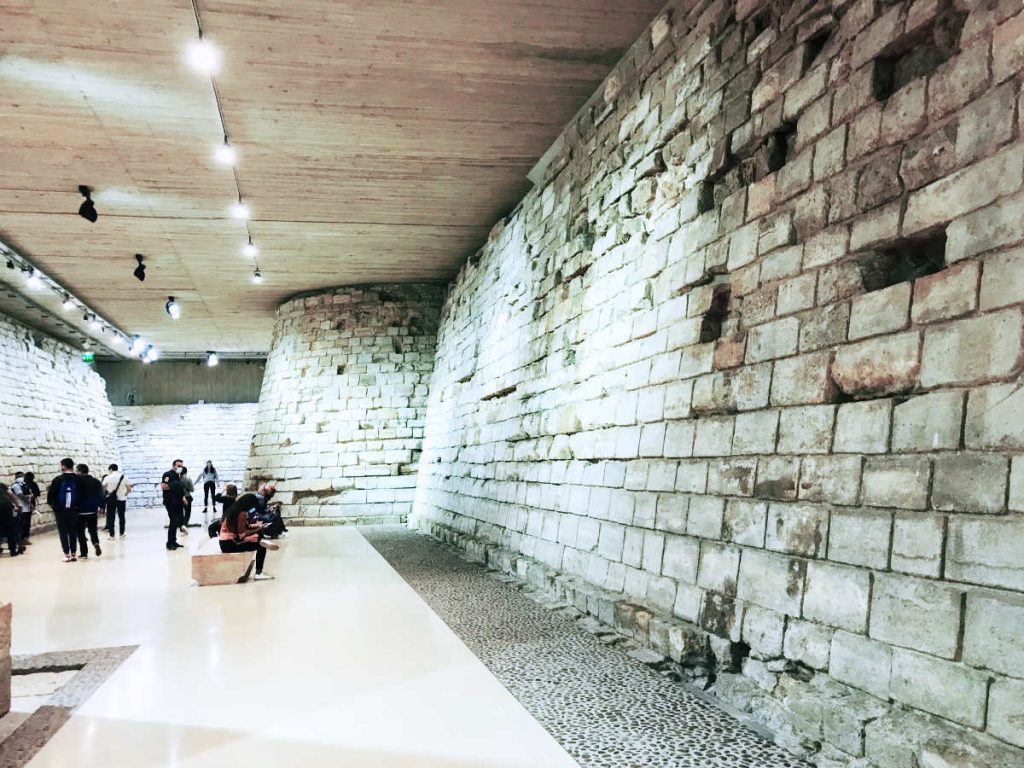
In the center was a large tower, known as the Grosse Tour du Louvre, protected by a series of outer walls and towers. In addition, it was protected by a large moat 10m wide, that were filled with water from the Seine.
You can still see some of the excavated walls of the old fortress in the Sully Wing of the Louvre museum.
4. It was a royal palace.
In France, historically the term “château” was used to refer to the rural location of a luxurious home (castle, manor etc.), while “palace” was used for similar homes within a city.
This is why it is usually the “Palais du Louvre” in the heart of Paris, and the “Château of Versailles” out in the countryside. (When the Château de Versailles was built, it was built on a royal hunting lodge, with nothing much around.)
5. No one knows where the name “Louvre” comes from.
The origins of the name “Louvre” are quite confusing. There are two main theories:
The first theory is according to the authoritative Grand Larousse Encyclopédique, the name derives from an association with wolf hunting den. From the latin: lupus or lupara.
The 2nd theory dates to the 7th century, when Saint Fare (also known as Burgundofara), abbess in Meaux, is said to have gifted part of her “Villa called Luvra situated in the region of Paris” to a monastery. It isn’t clear that the land she gifted is the same land as the present site of the Louvre, but this is the theory.
What is clear however, is that when the fortress was first built in the 12th century, the great tower was called the Grosse Tour du Louvre, and the name has stuck.
6. Sun King Louis XIV was the last King of France to live in it.
When Sun King Louis XIV ascended to the throne, he was merely 4 years old. It was a tumultuous time known as the Fronde, and at one point, the 12-year old Louis and his mother were held prisoner at Palais Royal in Paris (the palace next to the Louvre) until they conceded.
This made Louis detest and distrust Paris. But he nonetheless, moved into the Louvre Palace as an adult and started making more renovations.
He did however start looking for a new power base, and settled on the family’s old hunting lodge: Versailles which was a couple of hours away from Paris by horse.
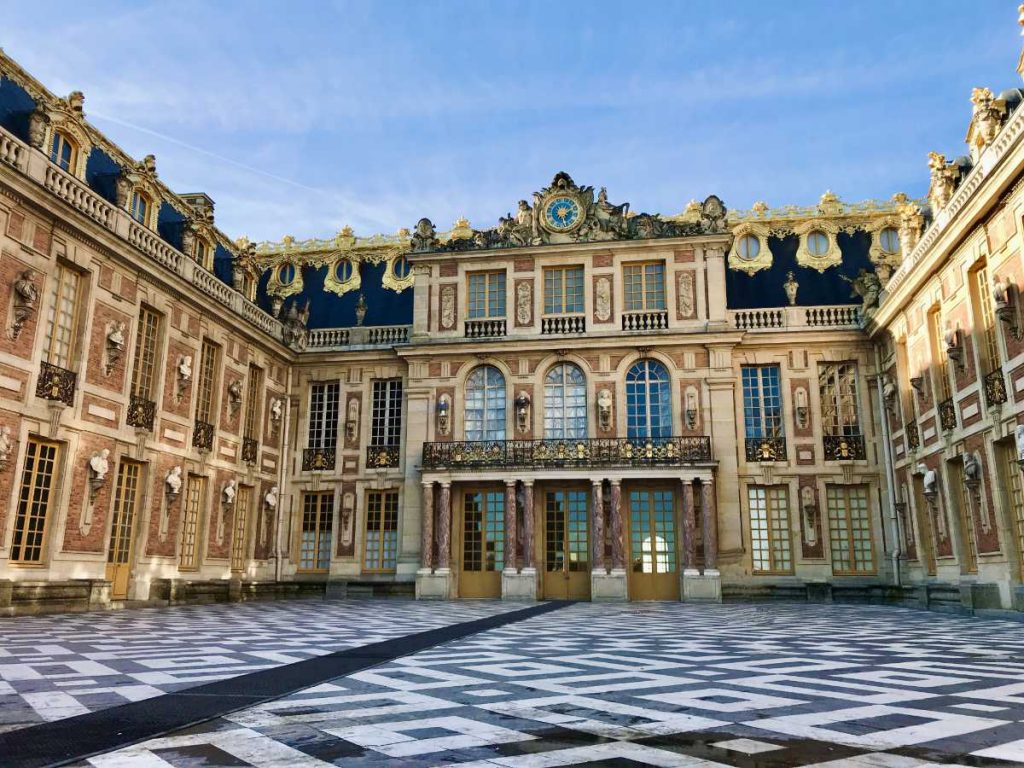
Once he started building the Château de Versailles, he diverted his construction budget from the Louvre to Versailles. No French King would live at the Louvre again.
7. It is on the Axe Historique of Paris.
The Louvre in the center of Paris is very close to two of the most famous sights of the French Revolution. It is in a direct line from Rue de Rivoli to the Place de la Bastille on the east, where the Revolution started with the storming of the Bastille, at a distance of about 1.5 miles (2.5km).
In addition, on the west if you continue in a straight line on Rue de Rivoli for 1 mile (1.5km), you arrive at Place de la Concorde, which is where King Louis XVI and Marie-Antoinette were guillotined.
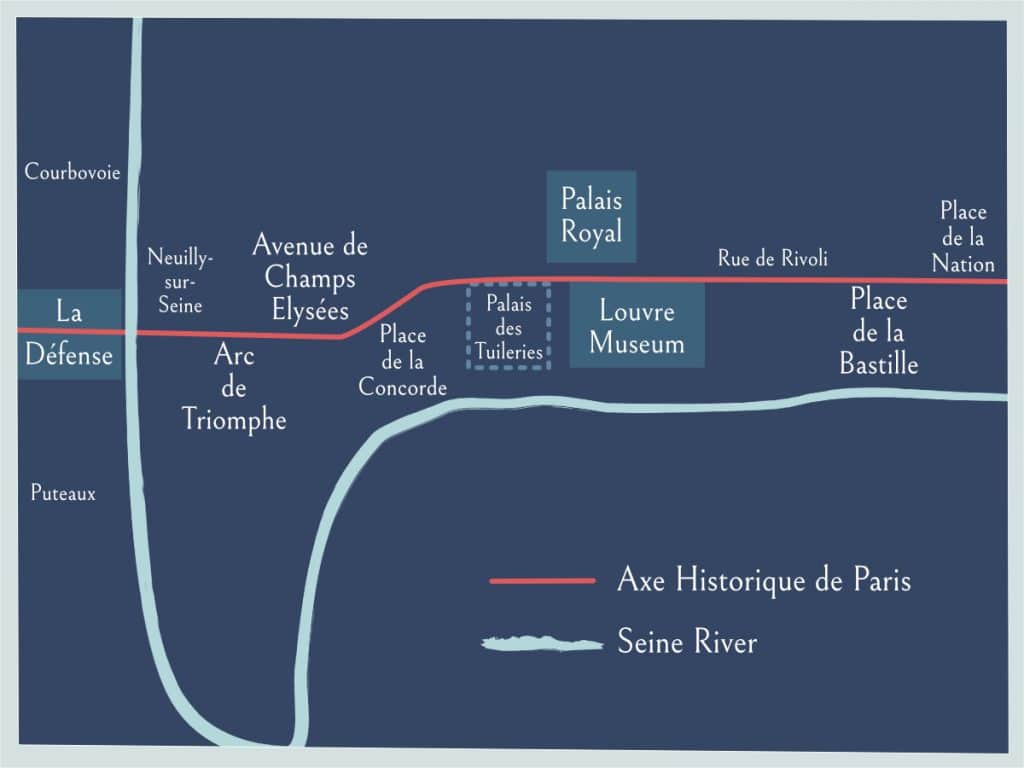
And if you go straight past Place de la Concorde (with a few meters deviation, you will be on the Axe historique of Paris towards the Champs Elysées, Arc de Triomphe and La Défense. You can read more about the history of Paris here.
8. It used to be attached to another palace, the Palais des Tuileries.
Over the centuries, many French monarchs renovated and added wings to the Palais du Louvre. French Queen Catherine de Medici started building the Palais des Tuileries in 1564, a stone’s throw away from the Palais du Louvre, and later monarchs would go on to attach the buildings.
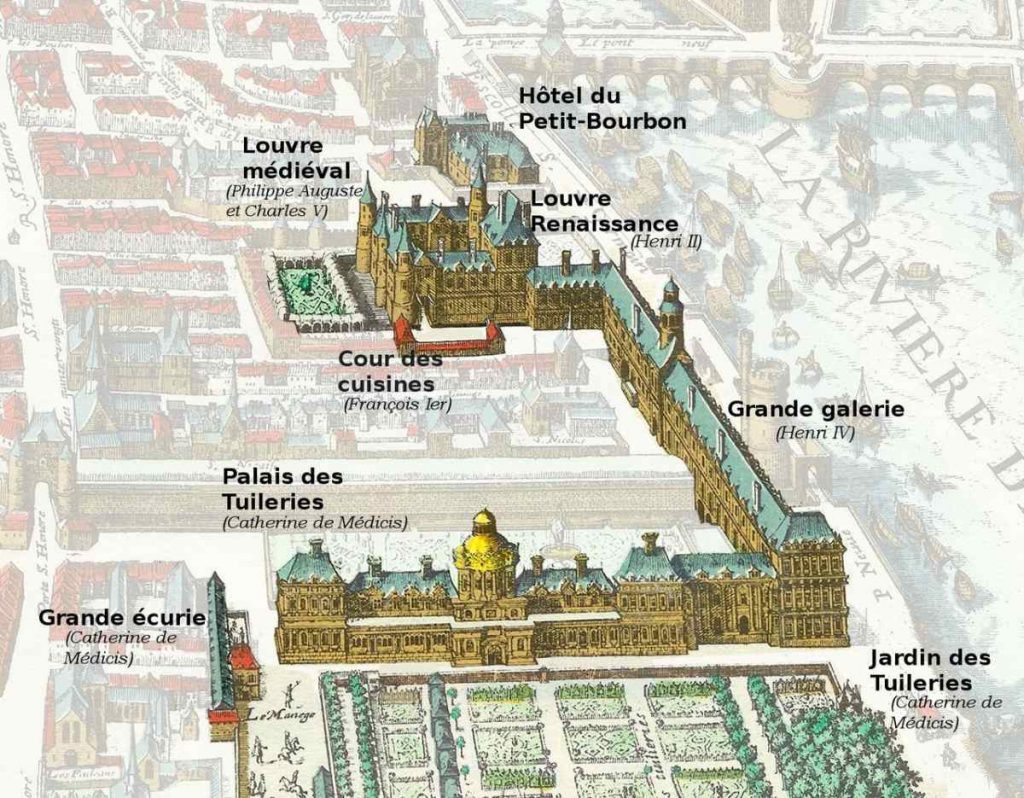
French Royals would usually stay at the Tuileries, while their ministers and fideles would stay at the Louvre. However in 1871, the Tuileries Palace that was attached to the Louvre, was burnt down during the Paris Commune protests.
Most of the Louvre managed to survive intact, but the Tuileries was destroyed and never rebuilt. You can read more about the history of the Louvre here.
9. Napoleon renamed it the Musée Napoléon.
When Napoleon Bonaparte took power and declared himself Emperor in 1804, he had the museum renamed Musée Napoléon.
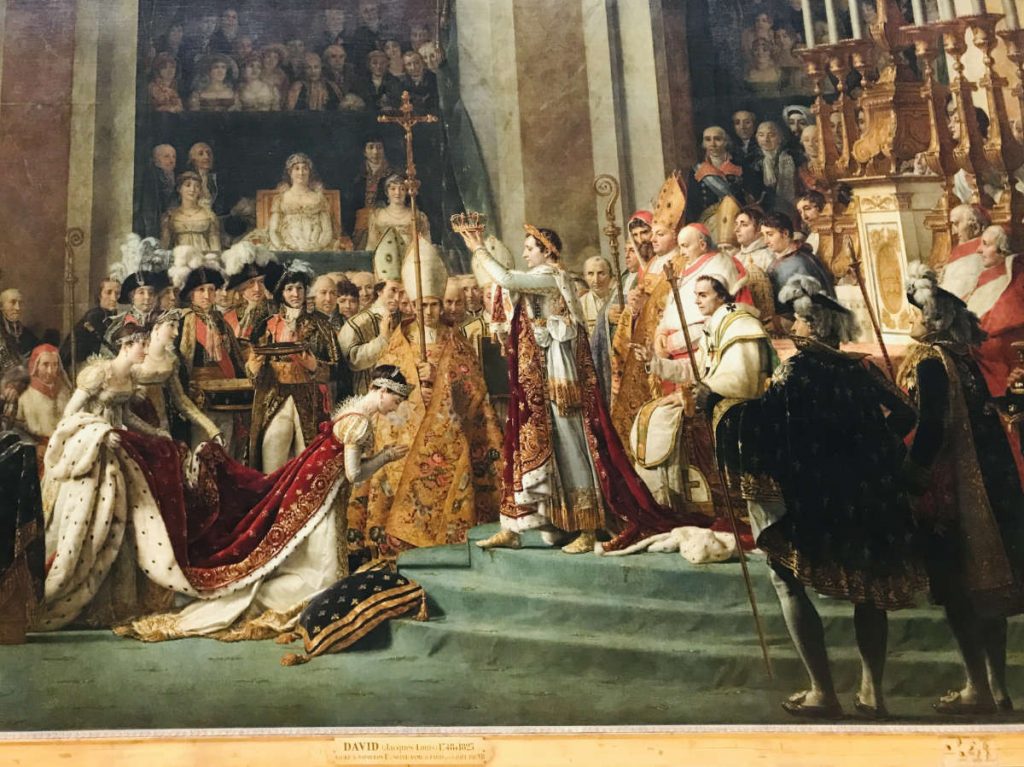
He himself did not live at the Louvre, preferring Château Malmaison, Fontainebleue, and later Palais de l’Elysée.
He did however set off pillaging various artworks across Europe, bringing them back to the Louvre. He then decided that the Louvre needed a new name to go along with all his “new” artwork, and renamed the museum “Musée Napoléon“.
Today the central courtyard at the Louvre is still called Cours Napoleon.
10. After Napoleon’s downfall, it had to return a lot of artefacts.
Napoleon and the French State had justified their seizures by appealing to “the right of conquest and republican ideals of artistic appreciation, as well as the advancement of scientific knowledge and the scientific cosmopolitanism of the Republic of Letters.”
After the fall of Napoleon however, the stolen artwork was demanded back. On May 8 of 1814, newly installed French King Louis XVIII declared that works not yet hung in French museums would be returned, which led to the return of many of the artworks, manuscripts, statues and paintings to Spain, Austria, Italy, and Prussia.
French museum officials tried to hold onto any objects they had seized. They argued that keeping the artworks in France was a gesture of generosity towards their countries of origin, and a tribute to their cultural or scientific importance. It did not quite work.
Over 5000 pieces of artwork had to be returned by the Louvre museum after his downfall.
11. The Mona Lisa was stolen from the Louvre.
The fame of the Mona Lisa (aka La Joconde in French) is really due to a grand theft.
It was not all that famous when, on 21 August 1911, the painting was stolen from the Louvre. After some confusion as to whether the painting was being photographed somewhere, the Louvre was closed for a week for investigation.
French poet Guillaume Apollinaire and his friend Pablo Picasso both came under suspicion and were questioned. Both were later exonerated.
A couple of years later, it was found to be an inside job. Louvre employee Vincenzo Peruggia, who had helped construct the painting’s glass case, had in fact carried out the theft.
Inspiring spy films everywhere, he entered the building during regular hours, hid in a broom closet, and walked out with the painting hidden under his coat after the museum had closed.
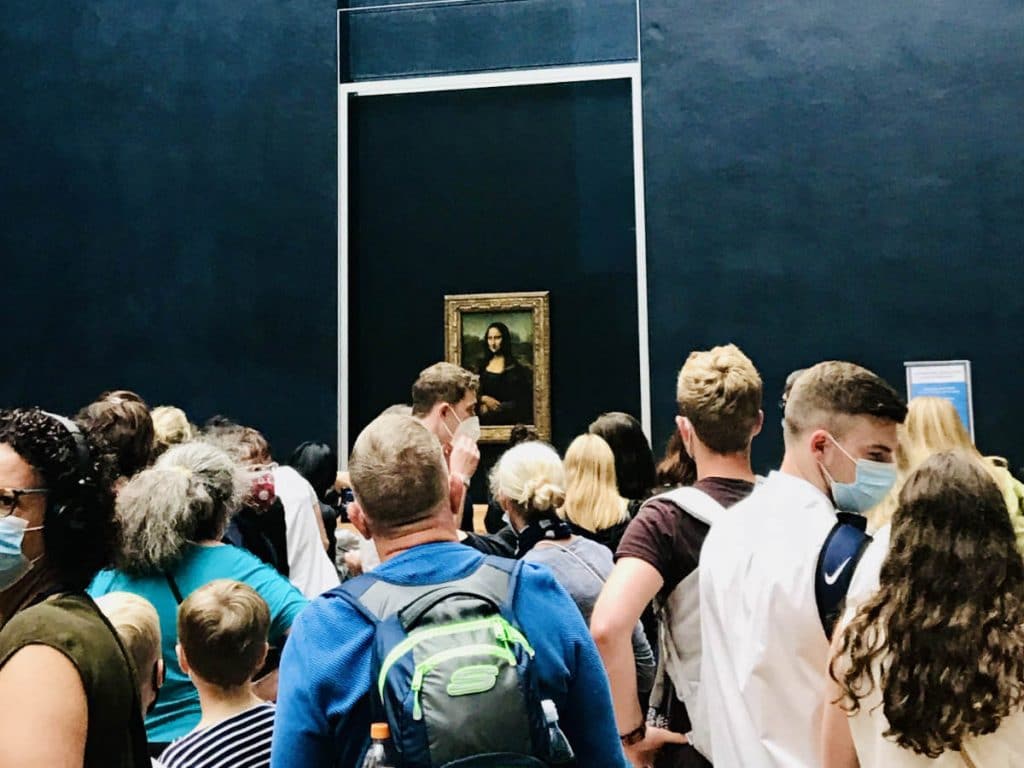
Peruggia was Italian and strongly believed that Leonardo da Vinci’s painting should have been returned to an Italian museum.
After having kept the Mona Lisa in his apartment for two years, Peruggia attempted to sell it to the Uffizi Gallery in Florence. It was exhibited in the Uffizi Gallery for over two weeks and returned to the Louvre on 4 January 1914.
Peruggia served 6 months in prison for the crime and was hailed for his patriotism in Italy.
12. Artists used to live at the Louvre.
After the 1789 revolution, the Louvre was officially declared a museum. Many artworks including the Mona Lisa became property of the French Republic and went on permanent display at the Louvre, while artists like Adélaïde Labille-Guiard moved into the Louvre apartments that were newly vacated.
It was a bit of a free-for-all, with artists hanging up their own paintings from ceiling to floor. This came to an end when the structure itself closed in May 1796 due to structural deficiencies.
13. France’s Ministry of Finance used to be located on the 1st floor of the Denon Wing.
The wings of the buildings around the Cours Napoleon where the glass pyramid entrance stands today, were actually substantially built and renovated in the 1850s by Emperor Napoleon III for his Minister of State.
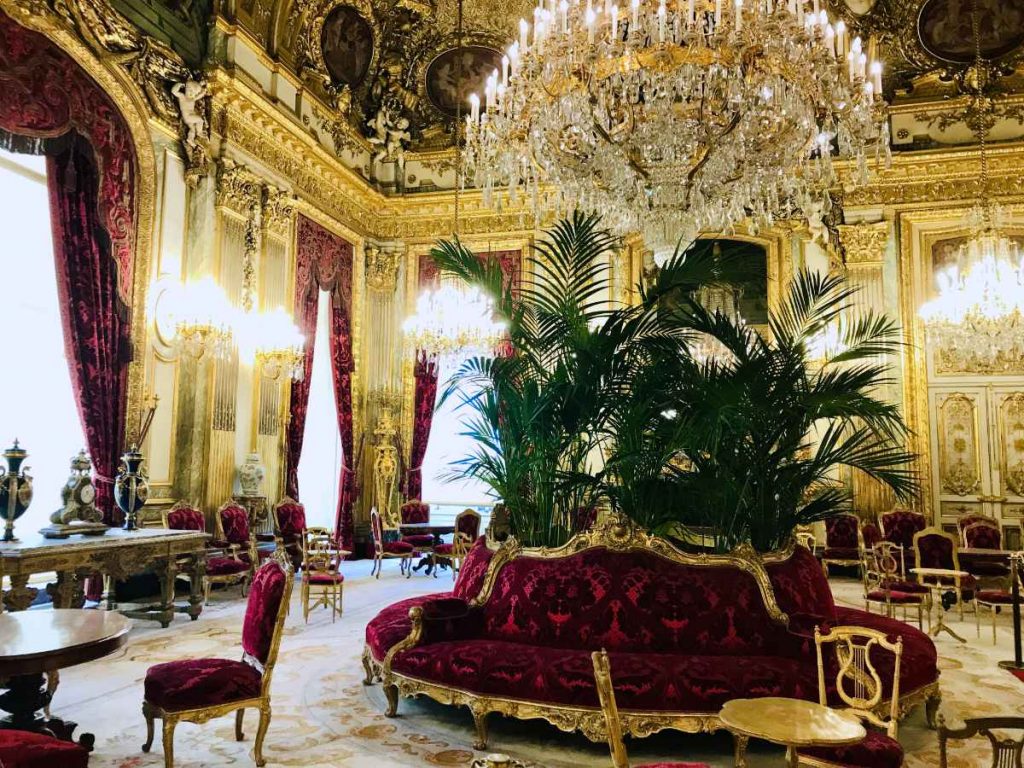
While much of the Louvre was later reconverted back into a museum. But these state apartments including a grand dining hall, and salons with their crystal chandeliers, ornate gold, and velvet decorations remained.
It continued to house the Ministry of Finance as recently as 1989, when they finally moved to an ugly modern building on the Seine called Bercy in the 12th arrondissement.
14. The Louvre is next to the famous Pont des Arts bridge.
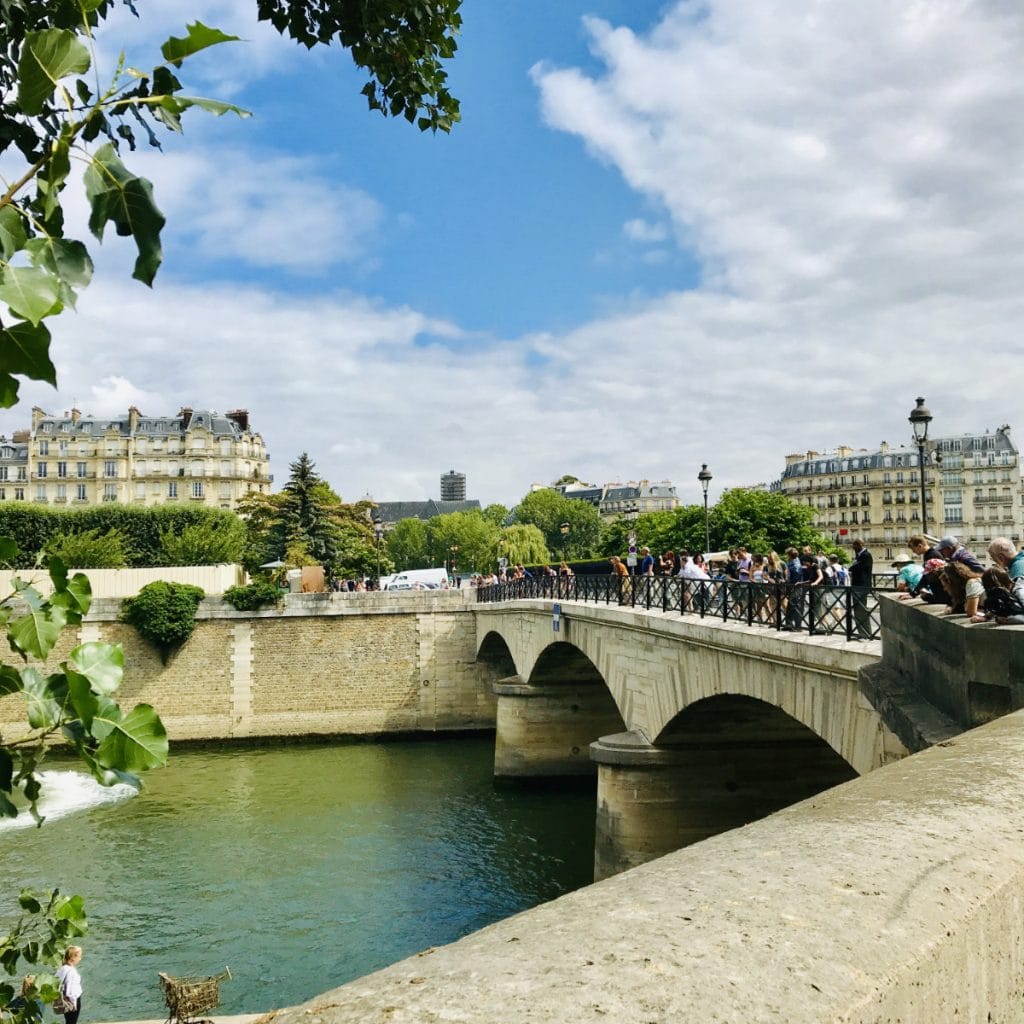
The famous bridge of lovers in Paris, the Pont des Arts is just off of the Louvre Museum, off of the Cour Carrée (square courtyard). While we don’t recommend you hang a padlock off this pedestriann bridge anymore, it does offer wonderful views vast expanse that is the Louvre.
15. The Horses on top of of the Arc de Triomphe du Carousel in front of the Louvre are copies.
In front of the Louvre Museum, you will see Napoleon Bonaparte’s Arc de Triomphe du Carrousel. It was commissioned by him to celebrate his victories across Europe, along with the Arc de Triomphe on the Champs Elysées.
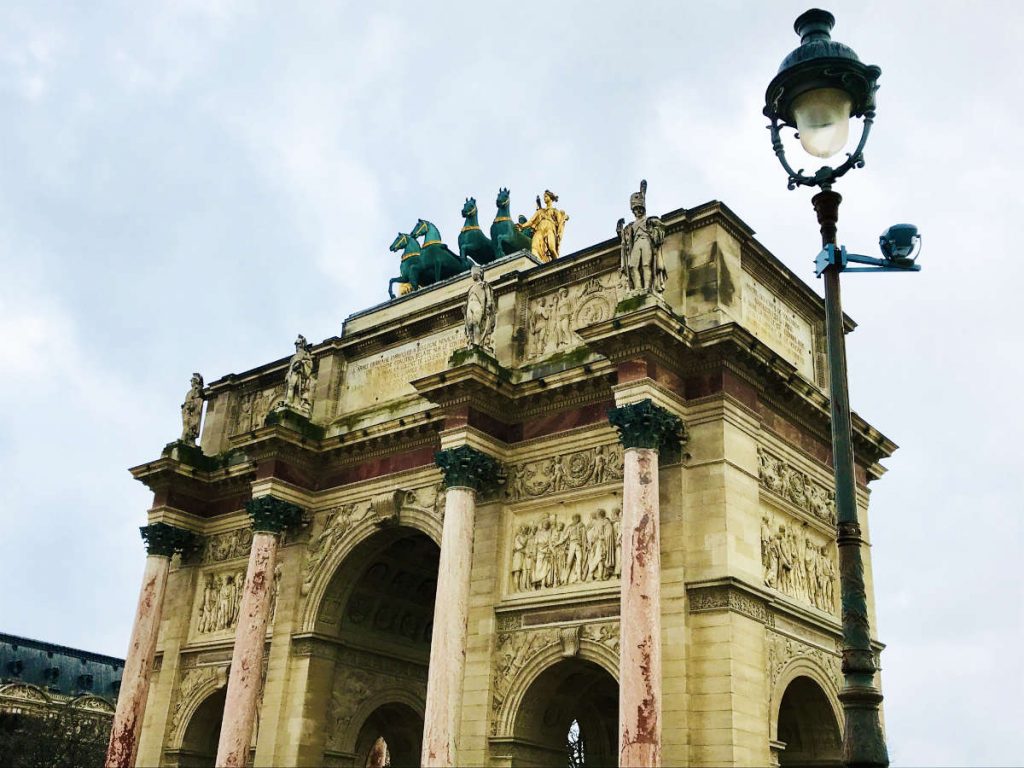
However, the Horses of Saint Mark, on top are merely copies. The originals which had adorned the basilica of San Marco in Venice since the sack of Constantinople in 1204, had been brought to Paris where they were placed atop Napoleon’s Arc de Triomphe du Carrousel.
These were returned to Italy after his downfall, and today there is a copy on top instead.
16. Its artworks were evacuated during WWII.
With Paris under occupation by the Germans (which was not the case during WWI), and Hitler and his cronies confiscating artworks all over Europe, it was only the cleverness of its museum directors that the Louvre’s greatest treasures were saved.
Starting September 27, 1938, a few months before the war, convoys of art would leave the Louvre to be hidden in châteaux and houses across France.
Over 3,600 paintings were taken down and move to places like the Château de Chambord, Valençay, Louvigny, Pau, etc. Over 200 trips take place with 5,446 boxes are moved including the Winged Victory, Mona Lisa and many many more.
The disappointed Germans would find many of the walls of the Louvre empty, moving items like the Bayeux Tapestry to the Louvre instead.
17. It is owned by the French Government.
Part of the patrimoine of France, the Louvre is officially owned by the French government, with more than 60% of its funding coming from the government.
The remaining comes from ticket sales, donors, and loan programs with other museums where artworks are lent for a period of time for a fee.
18. It connects directly to the metro and a small underground mall.
If it raining and you don’t want to go outside, you can connect directly from the metro to the Carousel du Louvre under the museum. Here you will find a few small snack shops and boutiques.
19. Some of Marie Antoinette’s furniture is at the Louvre.
After the mobs stormed the Château de Versailles during the French Revolution, a lot of its treasures were seized. Some were taken to the Louvre for preservation.

While some were restituted to Versailles (it is after all, also owned by the French government) some items remain at the Louvre. You can find them in the Sully wing Level 1 of the Louvre.
20. It is not symmetrical.
If you look at the two wings of the Louvre, Richelieu and Denon, they are not quite symmetrical. Richelieu is slightly wider due to the placement of the road.
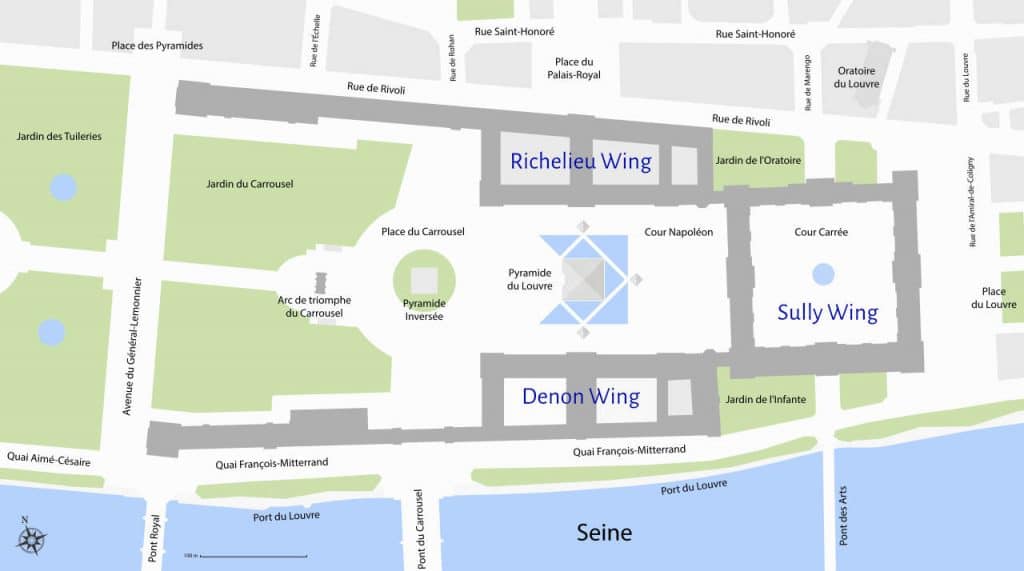
In addition, when you are in the Cours Napoleon, and looking at each of the buildings on the three sides, you will notice that there is not one “grand entrance”.
This is due to the multiple renovations that the Louvre underwent, where as late as the 19th century, Napoleon III (nephew of Napoleon Bonaparte) intended to fully connect the Palais des Tuileries to the Louvre. In effect, the Tuileries would have been the “grand entrance”.
21. There is a Louvre in Abu Dhabi and Lens.
With only 10% of its articles on display at the Louvre in Paris, the museum could afford to expand a bit. A satellite museum in the northern city of Lens was opened in 2012 with around 600 pieces of art.
A partnership was also entered into with the government of Abu Dhabi, U.A.E. in the Middle East. The Louvre Abu Dhabi on Saadiyat Island was opened in exchange for US$1.3 billion.
The French agreed to rotate between 200 and 300 artworks during a 10-year period and provide four temporary exhibitions a year, for 15 years. The art will come from multiple museums in Paris, including the Louvre, the Georges Pompidou Centre, the Musée d’Orsay, Versailles, the Musée Guimet, the Musée Rodin, and the Musée du quai Branly.
22. There are four glass pyramids.
In the 1980s, French president François Mitterrand decided that the Louvre should entirely become a museum.
He selected I. M. Pei, a renowned architect to substantially renovate the space, including an underground entrance accessed through a glass pyramid in the Louvre’s central Cour Napoléon.
Parisians initially hated the idea of this modern pyramid in the middle of the ancient royal palace, but the work was completed anyway in 1993. In a few short years, however, the Louvre Museum would become the most visited museum in the world.

There are four glass pyramids outside the Louvre, as well as an inverted one inside.
23. The statues around the front courtyard feature 86 Illustrious men.
In the 19th century, it was decided that the front of the Louvre should be decorated with statues of some of the most famous people in France.
They include 25 writers, 20 artists, 13 architects, as well as 10 scientists, 9 statesmen and 8 churchmen. At around the same time, 20 statues of “Queens and Illustrious women” were placed around the Jardin du Luxembourg.

23. Picasso exhibited his works there.
It is very rare for a living artist to have his work exhibited at the Louvre. For his 90th birthday, an exception was made for Spanish painter (and resident of France) Pablo Picasso.
A selection of Picasso’s pieces went on display in the museum’s Grande Galerie in the Louvre. Picasso would die a year later at 91 years old in Mougins, France. Today many of his works are at the nearby Musée Picasso as well as the Musée d’Orsay and the Orangerie which are all within walking distance of the Louvre.
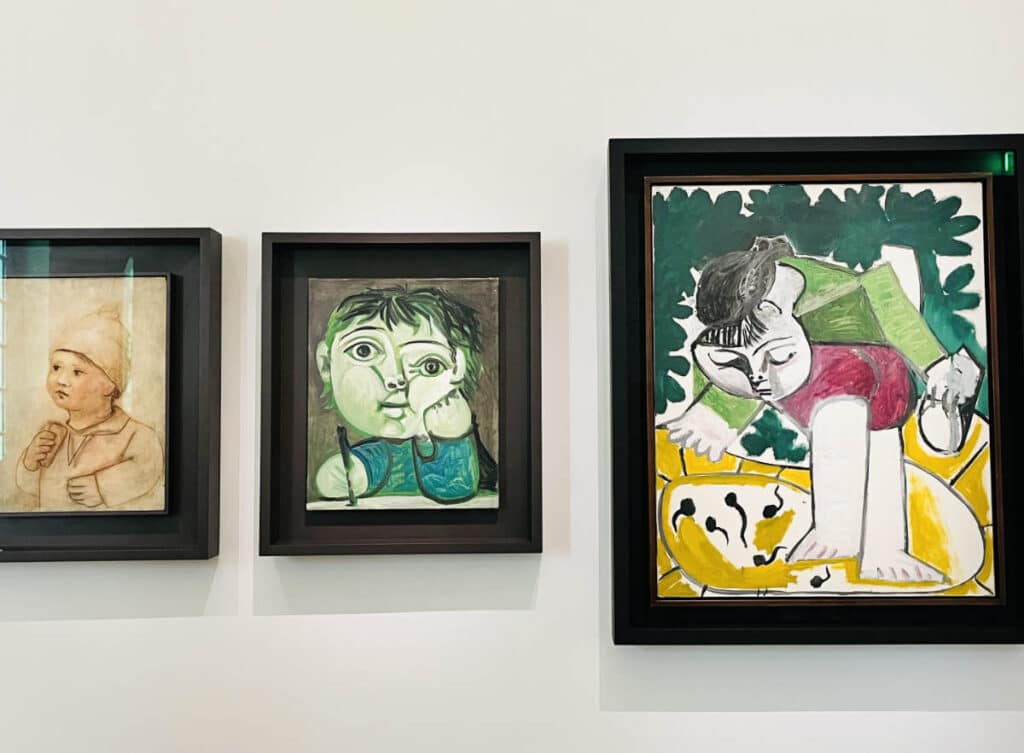
24. Artworks at the Louvre move all the time.
Locals like myself who live in Paris, have noticed that the artworks and paintings are not where we thought they would be.
At times, certain items are also on loan in other museums, or out for reparation and cleaning. On my most recent trip, the sculptures of Michaelangelo’s slaves were out for cleaning.
In addition, a big problem when walking through the Louvre however, their mapping system is not the most user-friendly. Because things move around so often, there is a map which says which rooms number contain which artworks.
However, the actual museum walls don’t have that room number or item number displayed anywhere (!). So basically, you are walking around with your map, trying to figure out if you are on the correct floor, which wing you are in, and whether you are going in the good direction.
25. There is a giant parking lot under it.
You may not realize it at first glance, but deep under the Louvre is a giant parking lot for tour busses and other vehicles. If you are looking for the shuttle to take you to Parc Asterix theme park, it is this parking lot that the shuttle leaves from.
26. It has a staff of over 2000 people.
The Louvre employs a staff of 2,000, reporting to a Director, who in turn reports to the French Ministry of Culture and Communications. The government pays for operating costs such as salaries, safety standards, and maintenance.
Other items such as new exhibitions, refurbishments, and acquisitions are left to the museum to finance.
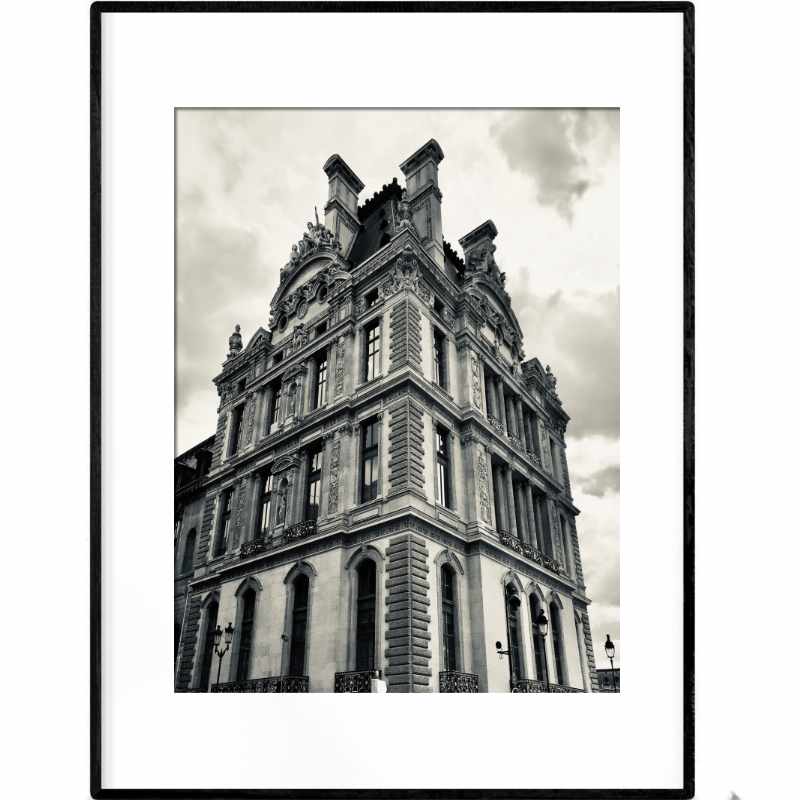
27. You can visit it at night.
Due to overcrowding by tour groups on “free sundays on the first of the month”, the Louvre museum decided to switch their calendars to offer “free friday night visits on the 1st of the month” instead.
With a lot fewer crowds, it can be a little spooky to walk around the Louvre in the evenings, but a lot of fun.
28. There are sometimes wine tastings there.
You can also have wine tastings at what is called the “caves du louvre”, a wine-tasting bar right next to the Louvre. The Louvre itself also holds special wine-tasting and champagne-tasting events at times for donors.
29. It makes money by allowing film shoots.
From Beyoncé to the Da Vinci Code and Netflix’s Lupin, there have been many movies, tv shows, and music videos that have been shot at the Louvre.
No it is not a replica on a backstage somewhere, due to funding requirements, the Louvre is open for hire.
30. There are special activities for kids at the Louvre.
For children from 4 years on, there are painting and exploratory workshops that are often offered by the Louvre on weekends and Wednesdays. (French children don’t go to school on wednesdays.). These ateliers are offered in French and do cost a small fee.
31. It has a special connection to the Musée Eugène-Delacroix.
In order to save the home of renowned French painter Eugène-Delacroix, his friends got together in the 1920s to turn it into a museum. The Society of Friends of Eugène Delacroix included names like Henri Matisse, Paul Signac, Édouard Vuillard, and George Desvallières.

It became a national museum in the 1970s and attached to the Louvre in 2004, featuring many of his smaller works and sculptures.
Today Louvre Museum officially manages the Musée Delacroix, located in Saint-Germain-des-Prés in the 6th arrondissement.
32. It has a full time art-sleuth as an employee.
After WWII, more than 60,000 stolen artworks returned to France. These were kept at the museum, until their rightful owners were found.
Today, there are still thousands of works in the Louvre’s possession because no rightful owners have come forward, with entire families having perished during the war.
The Louvre’s full-time art sleuth is tasked with studying the provenance of several of those paintings and artworks, looking through files, auction catalogs, art gallery and framers’ receipts, to track how works of art changed hands over the years.
33. The return of other works has been contested.
While certain artworks are waiting for their rightful owners, the ownership of other pieces of art is contested. The museum is awash with works from Egypt and the Middle East that was taken back to France by archeologists and diplomats in the 19th and 20th centuries when those countries were not in a position to say no.
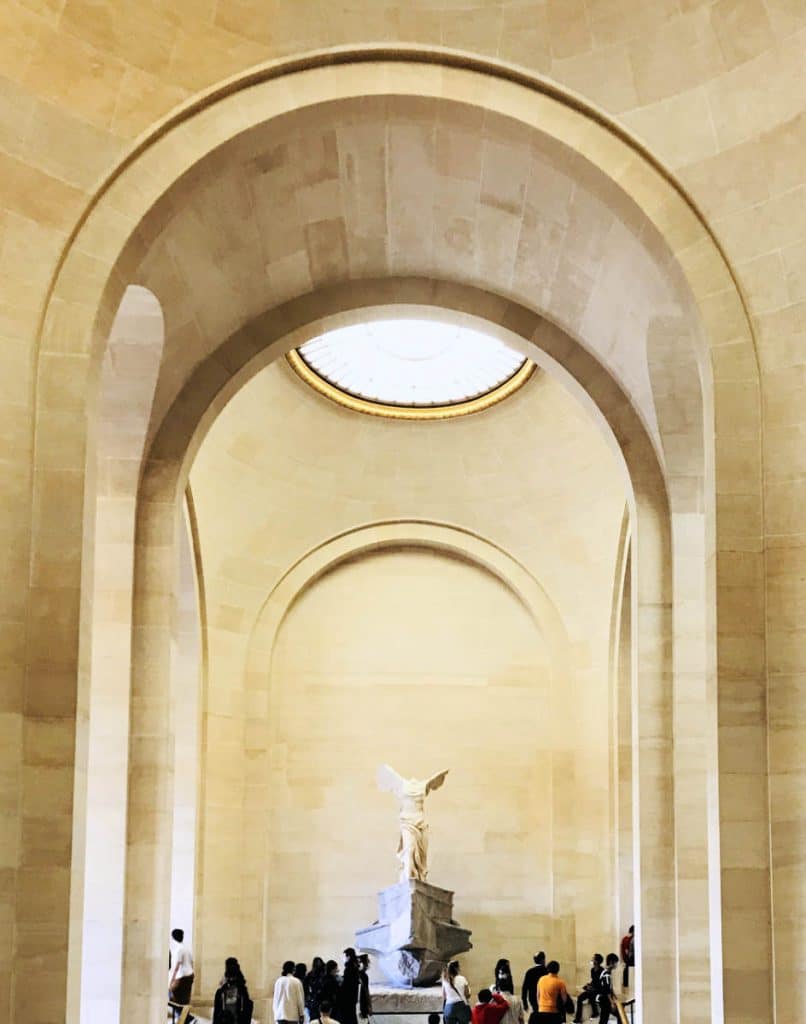
Another example is the Winged Victory of Samothrace, dating back to the 2nd century BC in ancient Greece.
It was discovered on the island of Samothrace (then part of the Ottoman Empire) by French vice-consul Charles Champoiseau in 1863, who sent it to Paris.
The Winged Victory is considered to be one of the great surviving masterpieces from the Hellenistic Period and the Greco-Roman era, and the Greek government has previously asked for its return.
34. It is in a flood zone.
One of the biggest threats to the Louvre Museum these days is that it is in a flood zone. With the Seine regularly rising due to climate change, many of the rooms of the Louvre are below water level.
During large floods such as in 2016, the Louvre was closed for several days while its treasures were moved to higher floors out of the danger zone.

If you enjoyed that article, you may like to read more about what items you shouldn’t miss when visiting the Louvre. A bientôt!

